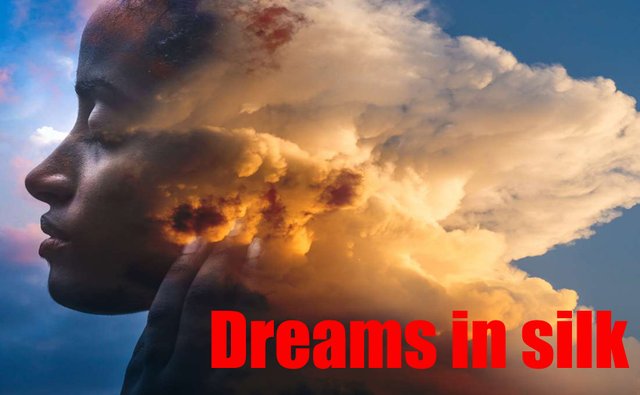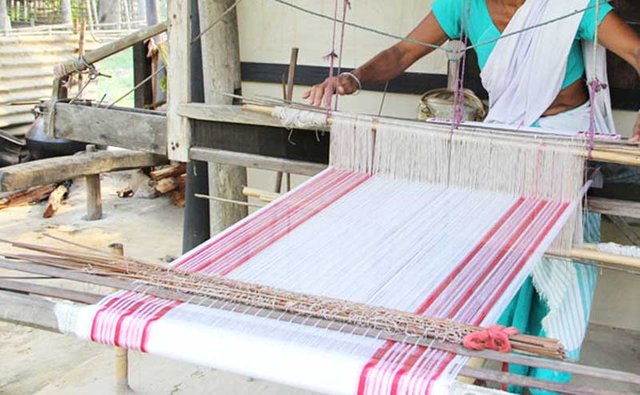Dreams in Silk !!

Do you know a place in Assam where the entire population weaves magic with silk? Yes, it is Sualkuchi, famous for its textile industry. I have read about Sualkuchi in books. Due to my repeated requests, I, along with my parents, took a trip down there. It is about 75 kms. from our home, so we took our own car.
The first thing that welcomed us to Sualkuchi was the main gate. It is beautiful. On each side of the gate are carved two hand-looms, along with the statues of some weavers. At the top, there is Mahatma Gandhi with his charkha. The rest of the gate is made in the design of a gamocha. Situated some 30 kms. from Guwahati, on the bank of the mighty Brahmaputra, this picturesque village is a haven for silk fabric-lovers, with silk ranging from the golden muga to the ivory white pat and the light beige eri.

Gamocha

I thought that there would be a big industry in Sualkuchi and people from all the houses would go there to weave. But, I was wrong. Every house in Sualkuchi has a small industry and the clothes made there are then supplied to the shops. The market of Sualkuchi is lined with such shops.
We have no relatives in Sualkuchi, we did not know anyone there. Fortunately, however, our driver had some of his relatives in Sualkuchi, and he took us there. As we walked through the tiny street, we could hear the rhythmic sounds made by the looms and flying shuttles. It was spell-binding to see the men and women at work: the rhythmic movements of their hands and feet on the looms, turning silk threads into magnificent fabrics, with the help of punched cards. The lady of the house we visited informed us that motifs are first drawn on a graph paper. Then holes are punched on rectangular cardboard's along the lines of the design to make the punched cards. The woven motifs are mostly inspired from the flora and fauna found in the State. Another common motif is that of the jaapi or the traditional Assamese hat.
On opening the chapters of history, we find that Sualkuchi was established as a silk weaving village in the 17th century by Momai Tamuli Barbarua during the reign of Swargadeo Pratap Singha. However, silk weaving in Sualkuchi actually has been traced back to around 10th-11th centuries, when King Dharma Pal of the Pala Dynasty sponsored the craft by bringing the Tanti weaving community from Tanti Kuchi to Sualkuchi. The village even finds mention in Kautilya’s Arthashastra by the name of Suvarnachudya of ancient Kamrup, where the best quality of Patrorna (pat) was produced around fourth century BC. The village took shape as a weaving village when the Ahoms occupied Sualkuchi by defeating the Mughals in the mid-17th century. Slowly, almost the entire village took up weaving.
Apart from its exquisite collection of silk products, Sualkuchi also has a number of historical monuments and temples. These archeological attractions are a must see for the visitors. We visited a Kali Mandir, located just near the Brahmaputra. The place where the temple is located is like a peninsula, with water on three sides and just a narrow connection with the larger landmass on the fourth side.
We then went to see the 'water purifying project'. The water of the Brahmaputra is purified here and supplied to the whole of Sualkuchi. It is high up in the hills. The Ashokastami festival is also celebrated there every year on the bank of the river.
Sualkuchi is a developed village. If you are seeking a place to spend the weekend, or looking for the best of Assam's silk at affordable prices, Sualkuchi is a must visit. That night, my father (who earlier thought it would be a boring place) thanked me for persuading him to go to Sualkuchi and also for proving him wrong.